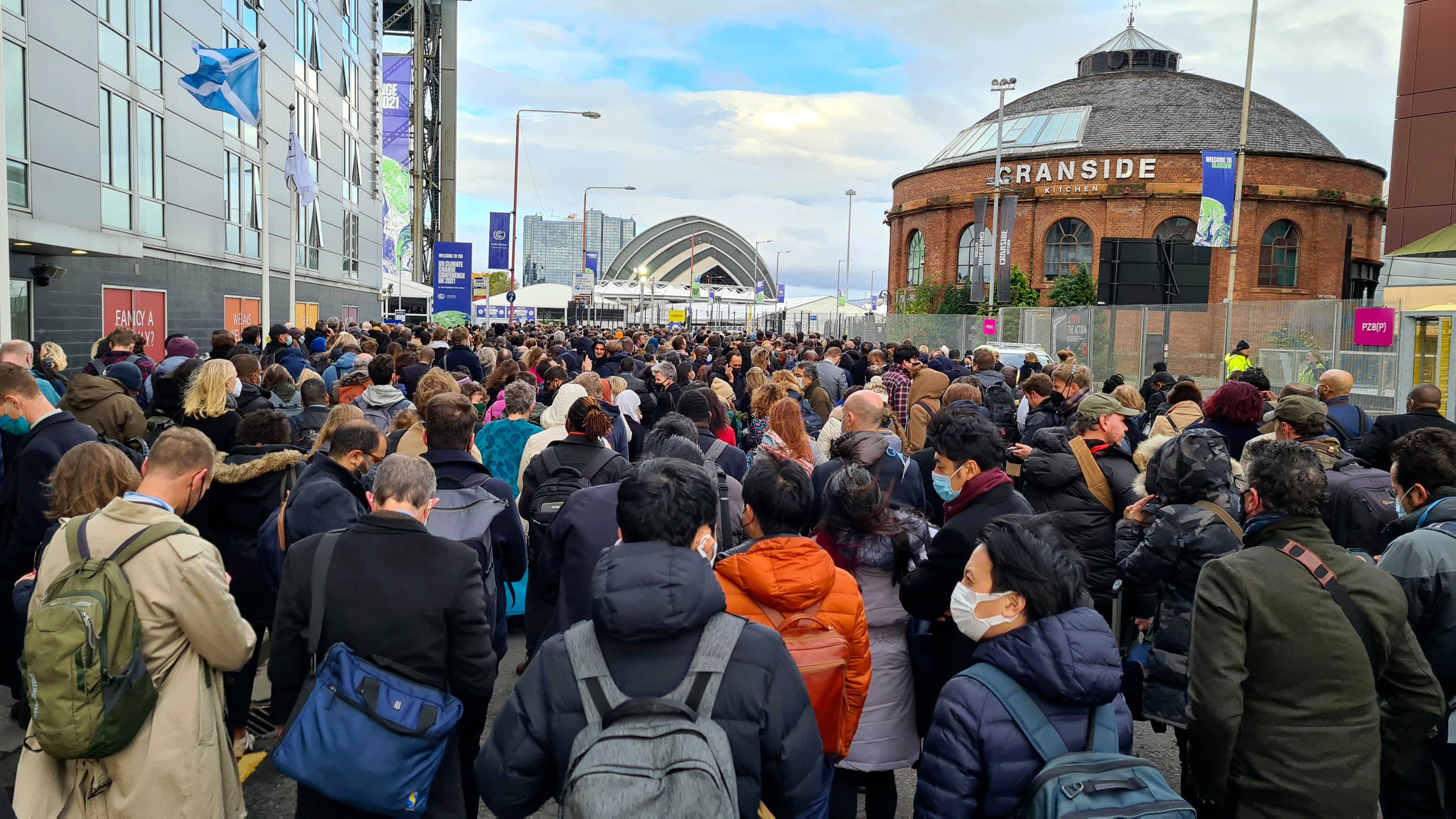Cop26 off to shaky start as queues and travel chaos mar first 24 hours
Climate correspondent Daisy Dunne was among thousands who faced hours-long queues, densely packed crowds and train cancellations at the start of the pivotal summit


Chaos and confusion. Those are two words that describe the first 24 hours of Cop26, the most important UN climate summit in years.
Around 25,000 people are attending the UK-hosted UN event, which has taken over Glasgow’s SEC Centre and other venues across the city. The conference brings together world leaders, activists, political negotiators and observers from across the world.
But despite the gravity of the proceedings, things are off to a shaky start. Thousands of people failed to get to the conference on time after bad weather and system failures caused train cancellations across the country.
Environment minister Zac Goldsmith was among those who joined me on the platform at Milton Keynes on Sunday after our train to Glasgow was cancelled without warning. With no replacement services on offer, I was forced to hire a car and drive 355 miles to the conference with a group of tired and hungry climate journalists.
Arriving at the gates of the conference on Monday morning, the chaos continued. Hundreds of people got stuck in hour-long queues with no social distancing measures in place. Guards barked “no photos” as the many reporters and politicians stuck in the crowds shared their displeasure on social media.
Inside the venue, there doesn’t seem to be enough space for the crowds to disperse. There are complaints that negotiating rooms are too small and that essentials like chairs and plug sockets are few and far between. On Monday afternoon, the official Twitter account for Cop26 urged people to stay away from the conference and work remotely due to “high levels of attendance”.
Leaving the venue is also no easy task. I was among those who struggled to get home amid police diversions and road closures. Some have raised concerns that the tactic of directing people to follow lengthy diversions on foot in the dark could pose a danger to women travelling home from the conference alone.
Wherever you go, people are asking the same question: why were the organisers not more prepared? UN climate summits usually take place every year, but Cop26 was delayed a year as a result of the Covid 19 pandemic – meaning that the UN and the UK had two years to get ready for this event.
“Things were nowhere near this bad in Madrid,” one attendee told me, referring to the last UN climate conference Cop25, which took place in Spain in 2019.
Join our commenting forum
Join thought-provoking conversations, follow other Independent readers and see their replies
Comments
Bookmark popover
Removed from bookmarks